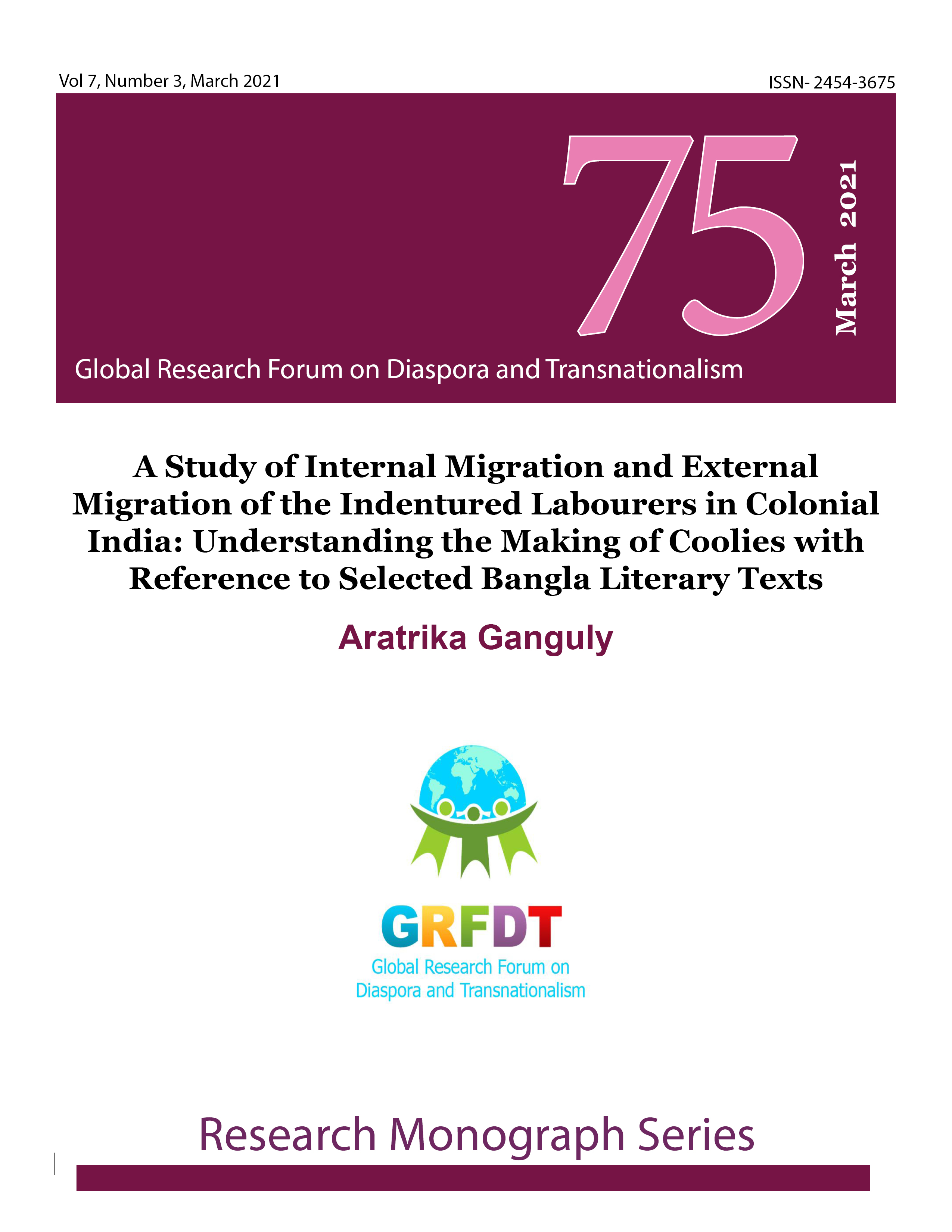
A Study of Internal Migration and External Migration of the Indentured Labourers in Colonial India: Understanding the Making of Coolies with Reference to Selected Bangla Literary Texts
Colonialism changed the way the world economy and trade were happening. The colonial powers were unable to maintain the institution of slavery. Consequently, with the abolition of slavery, a new form of labour system was set up to fill the demand and supply gap. This labour system was created to reap maximum profit while exploiting the labourers in every possible manner. This is how indentureship was born. This system was born in various European colonies during19th century, and the labourers were referred to as coolies- a derogatory and racial term. The colonial plantations of jute, tea, rubber, coffee, sugarcane, etc., had draconian labour conditions that caused the coolies’ lifetime suffering. In the context of British India, this coolie network from India to other countries (external migration) was similar to the coolie network within India (internal migration). Indians were sent to other countries as coolies and within various tea plantations, coal mines, or other pla
Download the PDF
